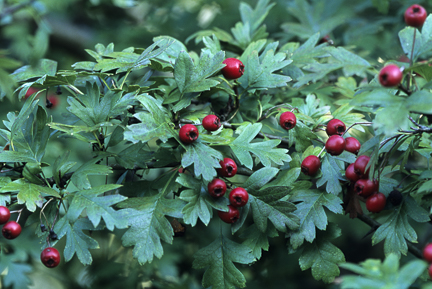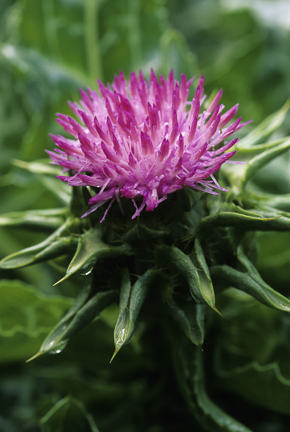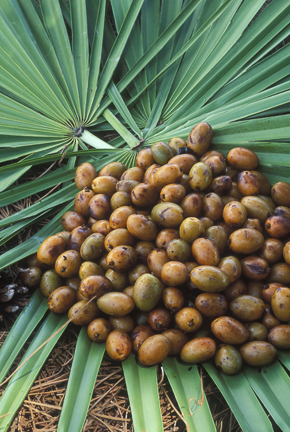HerbalEGram: Volume 15, Issue 12, December 2018
Conference Report: Workshop on Botanical Food Supplement and Herbal Medicine Adulteration
By Stefan Gafner, PhD
A workshop
titled “Adulteration and Fraud of Botanical and Natural Health Ingredients:
Issues, Challenges and Prevention Tools for the Industry” was held November
29-30, 2018, in Frankfurt, Germany, as part of the Health Ingredients Europe
trade show. It was organized by botanical extract manufacturer Euromed SA (Mollet
del Vallès, Spain) in collaboration with the American Botanical Council (ABC; Austin,
Texas), Extrasynthèse SA (Lyon, France), Hylobates Consulting (Rome, Italy), Vitafoods
Insights of Informa Exhibitions (London, England), Smart Short Courses of
Belgium and USA, and Informa and UBM’s “Health & Nutrition Week 2018.”
 The
goal of the workshop was to educate the European herbal medicine and food
supplement industries about adulteration of herbal ingredients, examine the
botanical ingredient supply chain and its vulnerabilities, and discuss new
quality control tools to improve the accuracy of herbal ingredient
authentication. The workshop included presentations from 17 experts from the European
Union (EU) and United States. The
goal of the workshop was to educate the European herbal medicine and food
supplement industries about adulteration of herbal ingredients, examine the
botanical ingredient supply chain and its vulnerabilities, and discuss new
quality control tools to improve the accuracy of herbal ingredient
authentication. The workshop included presentations from 17 experts from the European
Union (EU) and United States.
The
workshop was divided into four sessions. The first session assessed the nature
and magnitude of the adulteration problem and was kicked off by ABC Founder and
Executive Director Mark Blumenthal’s presentation on the ABC-AHP-NCNPR Botanical
Adulterants Prevention Program (BAPP). Blumenthal gave an overview of the
extent of adulteration in the United States and the 46 peer-reviewed papers
that the BAPP has published to date. BAPP’s draft standard operating procedure
(SOP) on “Best
Practices for the Disposal/Destruction of Irreparably Defective Articles,” which has recently been evaluated by various
dietary supplement industry stakeholders, was viewed by industry members and various
regulatory agencies as a helpful initiative to curb adulteration.
In
the second talk of the session, Anna Rita Bilia, PhD, of the University of
Florence, Italy, reviewed analytical methods to authenticate herbal
ingredients. Bilia’s presentation focused on methods of chemical analysis, and she
explained that the use of appropriate statistical methods and properly
authenticated plant materials may be the best way to detect adulterated
materials. These chemometric techniques can be applied to all commonly used chemical
analysis methods.
The second session featured
presentations regarding the industry’s response to adulteration in the EU and worldwide.
Speakers included Patrick Coppens (Food Supplements Europe; Brussels, Belgium),
Michel Horn (European Federation of Associations of Health Product
Manufacturers [EHPM]; Elsenborn, Belgium), and Bauke van der Veen (European
Herb Growers Association [EUROPAM]; Biddinghuizen, Netherlands). Coppens reviewed
European regulations regarding food supplements and explained how the industry
in Europe was looking at the adulteration problem. According to Coppens, most
food supplement products in Europe are of good quality, and issues reported in
the European Commission’s Rapid Alert System for Food and Feed (RASFF) are
mainly regarding novel foods that have no market authorization in Europe,
illegal substances (e.g., products containing active pharmaceutical ingredients
such as sildenafil or sibutramine), and contamination (e.g., microbial, heavy
metal, pesticide). He also suggested that food supplements are adequately
regulated but admitted that “you cannot eradicate fraudulent practices by
regulation."
Horn presented the EHPM
quality model as an example of the production of high-quality botanical
ingredients. He recognized that many fraudulent and potentially unsafe products
are sold on the European market via the internet. One of the issues is that
products sold online are more difficult to control by state authorities, and Horn
pointed to the need for more stringent border controls. He also noted that fraudulent
companies can enter the European market in EU countries that have weak legal
frameworks, and that th ese companies can use the “entry country” as a base to
distribute their products within the entire EU. ese companies can use the “entry country” as a base to
distribute their products within the entire EU.
Van der Veen’s talk on
transparency as a potential solution to adulteration from the perspective of
the EUROPAM ended the session’s presentations. The session concluded with a
roundtable discussion that was moderated by Heather Granato (Informa
Exhibitions; Phoenix, AZ), who also acted as master of ceremonies for the
entire workshop. One particularly controversial point was the extent of the
problem of adulteration in Europe, and opinions varied widely among the
workshop attendees.
Next,
a group of six speakers spoke about the tools available to prevent
adulteration. This author and Julien Diaz (BotaniCert; Grasse, France) gave a
few examples of botanicals for which adulteration has been reported in Europe,
and what analytical methods can be used to detect such fraudulent materials. Among
others, examples included the addition of flavonols or flavonol-rich extracts to
ginkgo (Ginkgo biloba, Ginkgoaceae)
leaf extracts, substitution of cranberry (Vaccinium
macrocarpon, Ericaceae) fruit extracts with proanthocyanidin-rich extracts
from low-cost sources such as peanut (Arachis
hypogaea, Fabaceae) or pine (Pinus
spp., Pinaceae) bark, and the sale of milk thistle (Silybum marianum, Asteraceae) seed extracts using spent (previously
extracted) milk thistle seeds for production, thus providing an extract devoid
of the medicinally important flavonolignans. Diaz emphasized the importance of
non-targeted chemical analysis methods, since assays that focus on one or two
marker compounds are often inadequate. This was exemplified by an ingredient
labeled as high mallow (Malva sylvestris,
Malvaceae) leaf extract that turned out to contain the isoquinoline alkaloid
berberine, which is not found in plants in the Malvaceae family. If only marker
compounds had been assessed, this extract may have passed the test.
David
Trosin (NSF International; Ann Arbor, MI) provided insight into the results of
botanical ingredient testing by NSF and emphasized the importance of a robust
auditing system for all parties involved along the food and dietary supplement
supply chain. Len Monheit (Trust Transparency Center; Spring, TX) presented
about the importance of food and dietary supplement authenticity from a
transparency and consumer trust perspective. He noted that a third of turmeric
(Curcuma longa, Zingiberaceae)
samples analyzed by his organization contained undeclared synthetic curcumin.
Such practices, he suggested, put the food and dietary supplement industry at
risk of damaging its reputation and eroding consumer trust.
The
session continued with a presentation by Joris Geelen (Food Compliance
International Pte. Ltd.; Singapore), who, as a member of the Belgian Federal
Public Service Health, Food Chain Safety and Environment, was elemental in
putting together a list of plants safe for consumption (known as the BELFRIT
list). Geelen, who is now a regulatory consultant in Belgium, talked about his
experience as a regulator in constructing this list, and explained the impact
and current regulatory relevance of the BELFRIT project.
 Luca
Bucchini, PhD (Hylobates Consulting), evaluated the safety risks that may
result from the addition of undeclared botanical ingredients. He noted that
most cases of herbal ingredient adulteration do not pose a safety risk, but
pointed to a notable exception in the 1990s, when Stephania tetrandra (Menispermaceae) was substituted with the
kidney-toxic Aristolochia fangchi (Aristolochiaceae)
in a traditional Chinese medicine formula, leading to a number of cases of
aristolochic acid nephropathy, including kidney failure, and even fatalities.1
He also explained that substitution of grape (Vitis vinifera, Vitaceae) seed extract with peanut is problematic
due to the potential of an allergic reaction in consumers that have peanut
allergies. Using the case of 1,3-dimethylamylamine (DMAA), which was previously
sold as natural rose geranium (Pelargonium
graveolens, Geraniaceae) extract,2 Bucchini explained the difficulties
in establishing that DMAA does not occur naturally in geranium, and that
despite the occurrence of serious adverse events, the financial, legal, and
reputational impact to companies selling fake geranium extract in Europe is
low. Luca
Bucchini, PhD (Hylobates Consulting), evaluated the safety risks that may
result from the addition of undeclared botanical ingredients. He noted that
most cases of herbal ingredient adulteration do not pose a safety risk, but
pointed to a notable exception in the 1990s, when Stephania tetrandra (Menispermaceae) was substituted with the
kidney-toxic Aristolochia fangchi (Aristolochiaceae)
in a traditional Chinese medicine formula, leading to a number of cases of
aristolochic acid nephropathy, including kidney failure, and even fatalities.1
He also explained that substitution of grape (Vitis vinifera, Vitaceae) seed extract with peanut is problematic
due to the potential of an allergic reaction in consumers that have peanut
allergies. Using the case of 1,3-dimethylamylamine (DMAA), which was previously
sold as natural rose geranium (Pelargonium
graveolens, Geraniaceae) extract,2 Bucchini explained the difficulties
in establishing that DMAA does not occur naturally in geranium, and that
despite the occurrence of serious adverse events, the financial, legal, and
reputational impact to companies selling fake geranium extract in Europe is
low.
The
theme of preventing herbal ingredient adulteration was also prominent in the last
session on traceability, herbal ingredient analysis, and key tools for quality
control. René de Vaumas (Extrasynthèse SA) lamented the inaccuracy in purity
assessments of chemical reference standards. He explained that authentication
may rely on the quantification of certain marker compounds, and that using a chemical
reference standard for which the purity was measured using inappropriate tools
(e.g., high-performance liquid chromatography with ultraviolet detection [HPLC-UV]
without the use of a primary standard) can lead to inaccurate results. The
advantages and drawbacks of genetic testing were then presented by Johannes
Novak, PhD (University of Veterinary Medicine; Vienna, Austria). He gave an
overview of DNA barcoding, including the different sequencing methods. He noted
that — contrary to the belief of many industry members — DNA can be found in
most botanical ingredients, even herbal extracts. However, DNA in extracts is
often fragmented and of low quality and may not be suitable for a genetic assay.
Therefore, Novac explained, it is important to thoroughly validate the genetic makeup
of material prior to processing it for authentication of a botanical material.
Anna
Mulà and Agustin Villar of Euromed SA explained how supply chain management and
quality control are managed from the perspective of an herbal ingredient
supplier. Part of their presentation included results from an investigation
into the authenticity of saw palmetto (Serenoa
repens, Arecaceae) using infrared spectroscopy and subsequent chemometric
analysis, which was able to distinguish authentic saw palmetto oil from adulterated
materials. While the presenters did not consider adulteration a high risk for
companies with a good quality control system in place, they noted that
adulteration offers an attractive financial incentive to unscrupulous companies.
The
workshop ended with two presentations on actual cases of adulteration. Bilia
gave an overview of her  investigation into the composition of an Italian food
supplement that led to a number of hospitalizations. The patients, who were
admitted for low blood pressure, had taken a food supplement labeled to contain extracts of olive (Olea europaea, Oleaceae) leaves and
buds; hawthorn (Crataegus laevigata,
Rosaceae) leaves, flowers, and fruits; fumitory (Fumaria
officinalis, Papaveraceae)
herb, and shepherd’s purse (Capsella bursa-pastoris, Brassicaceae) herb.
Using
a combination of analytical techniques (HPLC-UV with mass spectrometric [MS]
detection, HPLC-MS/MS, and nuclear magnetic resonance [NMR]), the researchers
were able to determine that the
food supplement contained an extract of a species of Indian
snakeroot (Rauvolfia
spp.,
Apocynaceae), and that the observed effects could be attributed to the
non-declared Rauvolfia
alkaloid-containing material.3 investigation into the composition of an Italian food
supplement that led to a number of hospitalizations. The patients, who were
admitted for low blood pressure, had taken a food supplement labeled to contain extracts of olive (Olea europaea, Oleaceae) leaves and
buds; hawthorn (Crataegus laevigata,
Rosaceae) leaves, flowers, and fruits; fumitory (Fumaria
officinalis, Papaveraceae)
herb, and shepherd’s purse (Capsella bursa-pastoris, Brassicaceae) herb.
Using
a combination of analytical techniques (HPLC-UV with mass spectrometric [MS]
detection, HPLC-MS/MS, and nuclear magnetic resonance [NMR]), the researchers
were able to determine that the
food supplement contained an extract of a species of Indian
snakeroot (Rauvolfia
spp.,
Apocynaceae), and that the observed effects could be attributed to the
non-declared Rauvolfia
alkaloid-containing material.3
Francis
Hadji-Minaglou of BotaniCert then gave an overview of essential oil
adulteration, where the financial incentive for substituting the labeled
ingredients with lower-cost materials is particularly large. He noted that
essential oil adulteration is becoming more sophisticated, with adulterated
ingredients more closely matching authentic essential oil profiles.
Hadji-Minaglou also emphasized the need for new analytical methods and the
importance of knowledge and expertise as the basis for success in quality
control of essential oils.
In
his concluding remarks, Blumenthal praised the workshop’s organizers for creating
a forum for the discussion of food supplement adulteration in Europe. He also
mentioned that the
small group that met in Frankfurt was an excellent representation of the larger
EU-based industry for both food supplements and botanical ingredients sold as
medicines. Blumenthal expressed his confidence that the event can be the
beginning of a larger effort in the EU and internationally to help research and
education efforts and combat fraud in the global botanicals marketplace.
Image credits (top to bottom):
All
images ©2018 Steven Foster. Ginkgo leaf
Hawthorn berries
Milk thistle flower
Saw palmetto fruit and leaf
References
- Debelle
FD, Vanherweghem J-L, Nortier JL, Aristolochic acid nephropathy: a worldwide
problem. Kidney Int. 2008;74:158-169.
- Austin KG,
Travis J, Pace G, Lieberman HG. Analysis of 1,3 dimethylamylamine
concentrations in Geraniaceae, geranium oil and dietary supplements. Drug Test Anal. 2014;6(7-8):797-804.
- Karioti A, Giocaliere E, Guccione C,
et al. Combined HPLC-DAD-MS,
HPLC-MSn and NMR
spectroscopy for quality control of plant extracts: The case of a commercial
blend sold as dietary supplement. J Pharm
Biomed Anal. 2014;88:7-15.
|